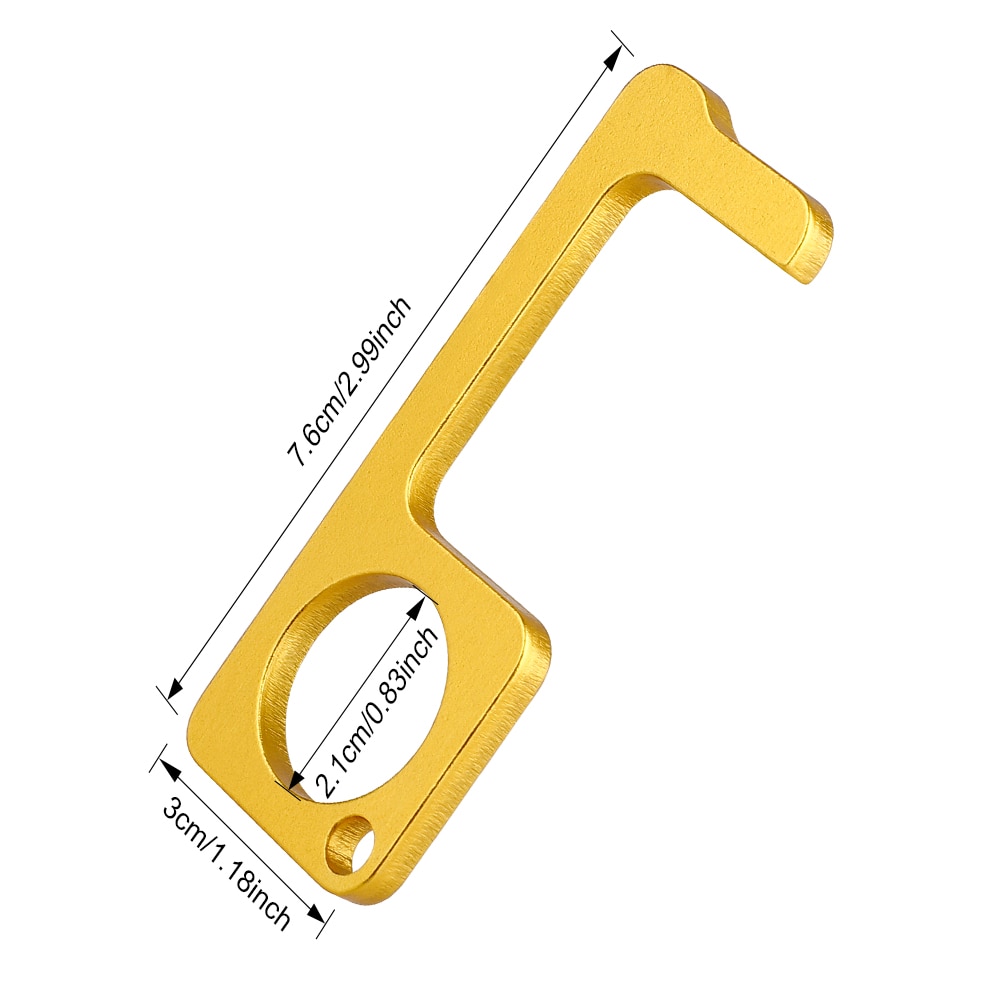Brass Hygiene Keys and Tools

There are a bunch of people making brass tools known as "hygiene tools", kickstarter, etsy, ebay, etc. I think these are a great idea and if nothing else, help people think about what germs may reside on which surfaces.
From a past life, where I was a buyer of "ephemera" and antique tools, I had to learn a lot about metals. Lots of things can be made to look antique or vintage, but the metal composition and state of decomposition tells the truth, usually. I am by no means an expert, but here's what I remember and what I've learned over the past few days of researching these "hygiene tools".
Start with the metal
The shape of the tool and its finish are not the first thing to think about.
What brass is being used?
What is brass itself?
Brass is copper and zinc. Really, brass should be called a copper alloy, since the majority metal in brass is copper. Wikipedia explains it well enough for the layperson. If you're not familiar with metals, they have flavors and types. Most of these hygiene tools appear to be made with Brass 360. This is cheap, plentiful, and relatively easy to work. The trick is brass 360, aka CN36000, contains 2-3% lead (Pb). As you go up the range, CN36010, CN36200, CN36xxx, the lead content increases. Since the 1970s in the US, lead has a bad connotation. It's not bad in itself per se, but where used can be bad. Such as, using it in drinking water plumbing, paint, etc. Why does this matter to me? Because California AB1953 mandated less than 0.25% lead in metals used for human consumption, like cooking pots and drinking water plumbing. Here's an easier to digest source.
How much lead is safe?
Zero. The CDC and other studies show that any lead is toxic to humans.
What does this have to do with hygiene keys?
The whole idea is that you're going to touch this key all the time when outside your house, maybe even in your house. That's a lot of constant contact with the metal. The natural sweat in your hand is acidic and may start to break down the metal. You may internalize the metals as a result. I haven't found studies that talk directly about lead-laden brass and repeated contact. If you know of any, I'm interested. I have found a review of lead toxicity which does indirectly mention the topic:
Inorganic lead (food, water, paint, toys, vinyl products) is minimally absorbed through the skin
Source: Altern Med Rev. 2006 Mar;11(1):2-22., page 4.
Minimally absorbed doesn't mean zero or non-absorption, but I don't have the research facts to back that up. Take it with a grain of salt (NaCl).
Can we get back to the hygiene keys?
So what metal to use with these hygiene keys for the paranoid? Possibly CN46400, aka naval brass. Or find some other lead-free brass/copper alloys. From some research and talking to metal manufacturers, "naval brass" is around $7-10/kg. CN36000 or "Brass 360" ranges from $1-8/kg.
Getting the stock is just the first step. Now you need someone to design the shape you want and then cut it. Waterjet cutting or CNC milling shops are plentiful. I'd also want to do human interface design and usability on the "keys" to see what works for the widest audience. And then, you can specialize for those who want different colors, fancy or plain designs, etc. And then, again, do these brass keys actually protect you from viruses and COVID-19? Or just bacteria?
Anyone interested?
This was far longer than I expected. I'm thinking about a part two where I cover the anti-microbial studies of copper alloys/brass. Thanks for reading this far.